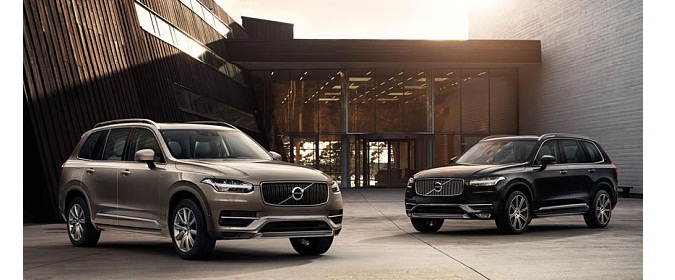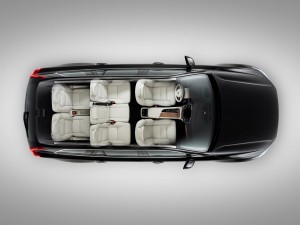Auto
All-new Volvo XC90 debuts enhanced multi-filter that improves interior air quality

 Nov 12, 2014-By introducing a larger, more efficient multi-filter in the cabin, Volvo Cars continues to refine its standard-setting CleanZone initiative. CleanZone is their unique approach to controlling interior air quality and providing a better driving environment through innovative solutions for enhanced wellbeing and health. Drivers can breathe easier because most microscopic, hazardous “fine dust” particles will now be prevented from entering the car.
Nov 12, 2014-By introducing a larger, more efficient multi-filter in the cabin, Volvo Cars continues to refine its standard-setting CleanZone initiative. CleanZone is their unique approach to controlling interior air quality and providing a better driving environment through innovative solutions for enhanced wellbeing and health. Drivers can breathe easier because most microscopic, hazardous “fine dust” particles will now be prevented from entering the car.
The multi-filter was designed especially for the SPA platform and will first appear in the all-new XC90 in the beginning of 2015. It features a larger design that intercepts more particulates and pollen, as well as a layer of active charcoal that effectively removes a host of contaminants that can impact the health of drivers.
The results are impressive. In a car equipped with the new improved multi-filter, the amount of “fine dust” particles smaller than 0,4 μm can be as much as 70% less than in a car without the filter, according to a standardized component test. This is a significant improvement as studies have shown that dust particles smaller than 10 µm can cause a number of health problems, including difficulty breathing and lung infections.
“Up to 45 per cent of the industrialised world’s population is now suffering from some form of allergy or hypersensitivity. Over ten per cent has asthma. At Volvo, our commitment to safety goes well beyond safety belts and air bags. It’s about making sure that every minute you and your family spend in a Volvo is as safe as it can possibly be. That includes breathing,” says Peter Mertens, Senior Vice President Research and Development. “With this filter we are now at the forefront of the industry in terms of particle separation.”
The filter is one element of Volvo’s state-of-the-art Interior Air Quality System (IAQS). Another element is a sensor that monitors the incoming air for noxious substances. If the level of harmful substances becomes too high (such as when driving through a tunnel), the car’s air intakes will automatically close. Together, the multi-filter and sensor keep out a number of harmful and irritating pollutants, including:
• Nitrogen oxides
• Hydrocarbons
• Ground-level ozone
• Gases and unpleasant odours
The CleanZone approach
Filtering outside air accounts for only half of CleanZone’s holistic approach to improving the driver’s environment. The other half, minimizing harmful emissions within the car, is just as important. And Volvo Cars has a number of programmes in place to achieve this.
Drivers, for example, appreciate that when they unlock their cars by remote control, the remote cabin ventilation system automatically vents out the interior air within one minute, getting rid of odours and emissions before drivers enter.
But in fact, the work to minimize interior emissions begins long before the cars are even built, with strict controls on the substances that may be used inside the cars. And Volvo Cars is leading the industry in switching to new, less toxic materials with fewer harmful additives.
Volvo Cars has also implemented a rigorous test programme to monitor and control emissions. This programme includes evaluations by the Volvo Cars Nose Team, whose members smell different objects to determine if their odour is acceptable or too strong. What is known as the ‘new car smell’ is actually low levels of emissions from materials. The levels do not present a danger but on hot days, concentrations that irritate hypersensitive people may occur.
Another aspect of the programme is the sun simulator test, in which the car is heated until the interior reaches a temperature of 65º Celsius – simulating parking in the sun on a hot summer’s day. The emissions of Total Volatile Organic Compounds (TVOCs) and aldehydes are then measured. Volvo has a very strict limit for TVOCs, since high levels in interior air can cause headaches, nausea and dizziness – and trigger asthma. Aldehydes are also limited because they, especially formaldehyde, can cause both respiratory and contact allergies. Nickel, another source of contact allergies when released from metallic surfaces, is also minimised.
With its focus on health and well-being, CleanZone represents the spirit of Volvo Cars’ human-centric approach to its work. It’s an approach that is perfectly in sync with modern sensibilities: all around the world consumers are becoming increasingly aware of how air quality can impact health, and are now demanding cleaner air inside their vehicles. Volvo Cars will continue to lead the way.
Volvo Car Group in 2013
For the 2013 financial year, Volvo Car Group recorded an operating profit of 1,919 MSEK (66 MSEK in 2012). Revenue over the period amounted to 122,245 MSEK (124,547 MSEK), while net income amounted to 960 MSEK (-542 MSEK). Global retail sales for the year amounted to 427,840 (421,951) cars, an increase of 1.4 per cent compared to 2012. The operating profit was the result of cost control and strong sales and was further tangible proof of Volvo Car Group’s progress in implementing its transformation plan. For the full year 2014, the company expects to stay in black figures and predicts to record a global sales increase of close to 10 per cent.
About Volvo Car Group
Volvo has been in operation since 1927. Today, Volvo Cars is one of the most well-known and respected car brands in the world with sales of 427,000 in 2013 in about 100 countries. Volvo Cars has been under the ownership of the Zhejiang Geely Holding (Geely Holding) of China since 2010. It formed part of the Swedish Volvo Group until 1999, when the company was bought by Ford Motor Company of the US. In 2010, Volvo Cars was acquired by Geely Holding.
As of December 2013, Volvo Cars had over 23,000 employees worldwide. Volvo Cars head office, product development, marketing and administration functions are mainly located in Gothenburg, Sweden. Volvo Cars head office for China is located in Shanghai. The company’s main car production plants are located in Gothenburg (Sweden), Ghent (Belgium) and Chengdu (China), while engines are manufactured in Skövde (Sweden) and Zhangjiakou (China) and body components in Olofström (Sweden).




















































